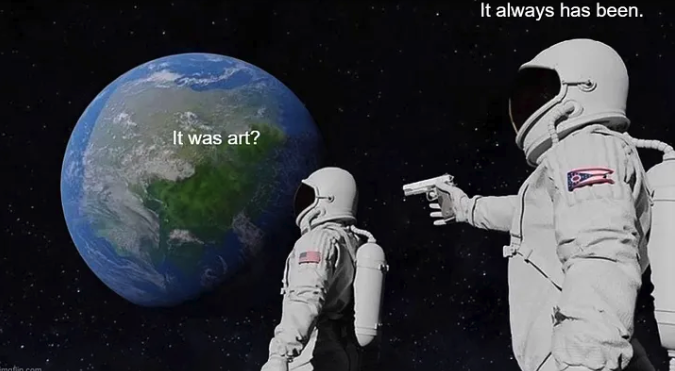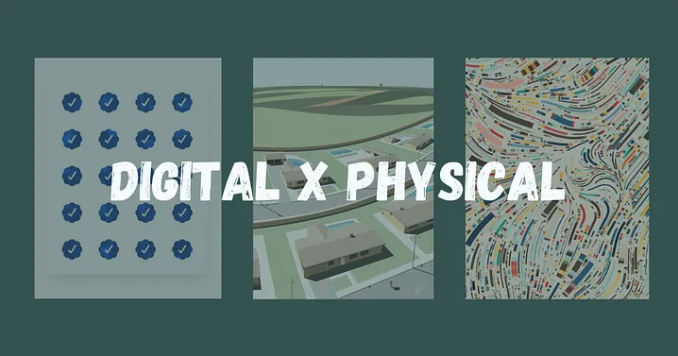Jack Butcher — $93,035
Grant Yun — $107,100
Tyler Hobbs — $1,000,000
In Web3, a common goal is to build technology that bridges the gap between web2 and brings over the next 100 million users. While everyone is busy debating what is the best way to do this, few have taken a step back to realize, not only what shaped Web3 in the first place, but what is already making the biggest impact to onboard the next wave of users.… Art.

Art has been and will continue to serve as the foundational pillar upon which Web3 technology is built because it perfectly exhibits the capabilities of blockchain technology while also reaching traditional audiences.
We wrote about these capabilities previously:
“…taking the form of NFTs, digital art has grown in popularity and can be purchased using digital cash, thus assigning real-world value and unlocking a suite of tools such as lending protocols, IP licensing, and token gated communities. This makes digital art not just a good store of value, but a functional token that provides utility.”
Lately, however, we have observed Web3 artists venturing into traditional art markets and advancing their digital offerings with physical pieces. This has brought significant attention to the Web3 space. For example, iconic works from Jack Butcher, Grant Yun, and Tyler Hobbs all set auction records, selling for much more than the prices of their peers and reflecting new styles of art that developed in the Web3 space.
However, traditional art markets still demand physical artwork. Although NFTs offer convenience, they fall short on security, tangibility, and legal protections. As long as digital art cannot offer these benefits, traditional art will continue to reign supreme. However, where Web3 excels is at building communities, sharing work across social platforms, and tapping into a pool of global liquidity — with blockchain users benefitting from a trustless, near-instant network that allows commerce to flow across borders.
The opportunity then seems to combine the two, digital x physical pairings. And that’s exactly what top Web3 artists are doing.
It can be likened to a Disney “fast pass” to success for artists. Those who employ blockchain technology can carve a novel path into traditional galleries and auction houses, often more swiftly than before — all the while introducing new art styles (generative, AI, etc.) and crafting a higher standard of work because on-chain art has to pass through a unique quality filter.
When artists mint their work on-chain and share it on social platforms, they expose their art to a fast-paced public square, subjecting it to all the praise and critique that comes with it. This process generally sifts out subpar work. Despite a few exceptions, the benefit is that artists can experiment with their style, explore new themes, and push their boundaries in an environment where they can receive near-instant feedback from their community, while assessing their financial success from collectors — a valuable tool for those who can master it.
However, this feedback shouldn’t be leveraged to create art that merely follows current trends and turns a profit. Although such strategies “work” and allow artists to generate revenue, they are usually short-lived, following the same trajectory of memecoins where someone invariably ends up holding the bag. For instance, glitch-style art attempting to profit from the original style by XCOPY, or yet another pixelated 10K NFT project that mirrors CryptoPunks.
https://www.fiverr.com/ryandyroff/create-xcopy-style-gif-art-for-nfts
That being said, collaboration and derivative works are still significant in the Web3 space. While it may be argued that all great art draws from another’s style, it’s this process of mirroring and borrowing ideas that ultimately refines art and inspires new idea. A perfect example is the addition of the CC0 movement, which some artists adopted to make their work free for anyone to use, copy, distribute, and create derivatives of. This has resulted in artists’ original pieces or styles being disseminated widely, leading to increased recognition.
An example of this is the #FREEHAWAIIPHOTO by Cath Simard. Her iconic image has resonated with both Web2 and Web3 users, and has become instantly recognizable across all social media platforms — acting as a bridge that connects users to on-chain art.

However, for all the benefits NFTs/digital art bring to the traditional art world, they still lack a key feature: physical security. Traditional art is something that can be secured, locked in a museum, and guarded. It’s considerably more challenging to steal Monet’s ‘Water Lilies’ than it is to send a phishing link and drain someone’s wallet. Traditional art can also be insured, offering legal and financial protections in the event of theft or damage. Regrettably, digital art lacks these benefits. Last year alone, over $3.8 billion in digital assets were stolen, a significant portion of which were NFTs, never to be returned to their owners again. Today’s art thieves are less Victorian-era bandits sneaking past guards and more keyboard warriors chugging Mountain Dew while waiting on mom to call for dinner upstairs.
So, what is the solution?
Digital art will see a tremendous value increase with the addition of on-chain legal protections. Once we address the theft issue for digital art, we make digital art more accessible to Web2 users who currently see anything crypto-related as a scam.
The only solution to this so far is Jurat, a court-connected L1 blockchain. Art minted on the Jurat blockchain automatically includes on-chain court connectivity, giving artists key benefits such as enforceable license agreements, royalties, and helping collectors recover stolen assets in the event of theft. No other ecosystem offers this vital legal connection for NFTs.
How we see the role of blockchain technology is not to replace, but to enhance the existing artistic landscape. The value and appeal of physical art, combined with the unprecedented access and versatility offered by digital art, provides a canvas for artists to reach global audiences and innovate without boundaries. The inclusion of Jurat technology is a critical step in this journey, providing much-needed security and legal protection for these digital assets. This, in turn, propels the value and attractiveness of digital art, shaping the future of both Web3 and the traditional art world. As artists continue to work within the Web3 space, we can anticipate an art ecosystem that is more interconnected, vibrant, and valuable than ever before.
If you are interested to learn more, visit: https://jurat.io/whitepaper/



